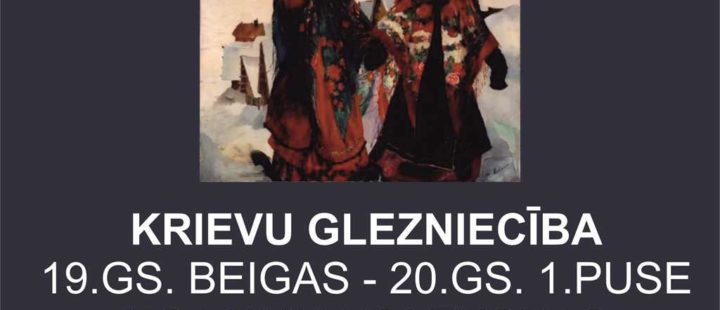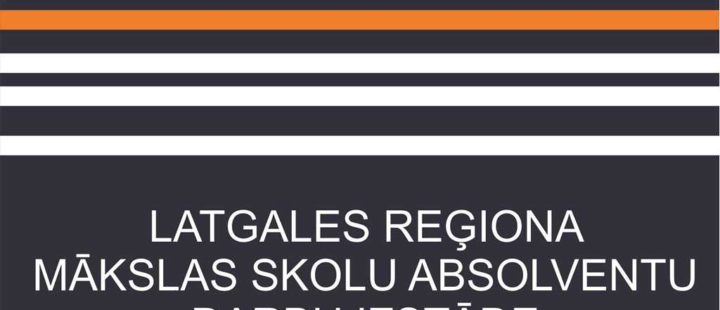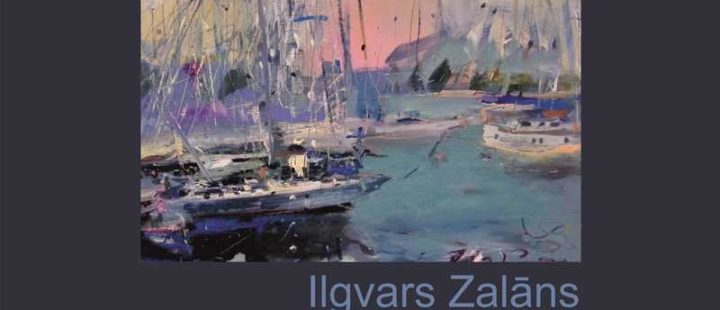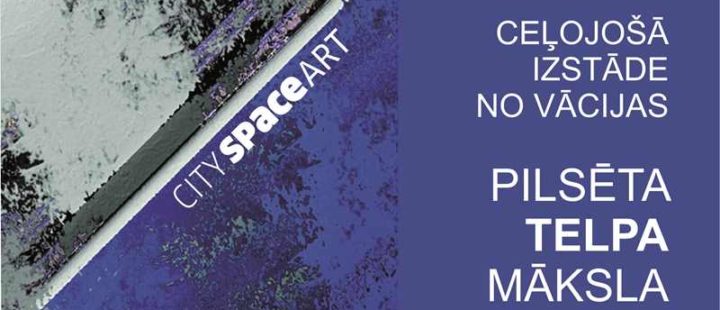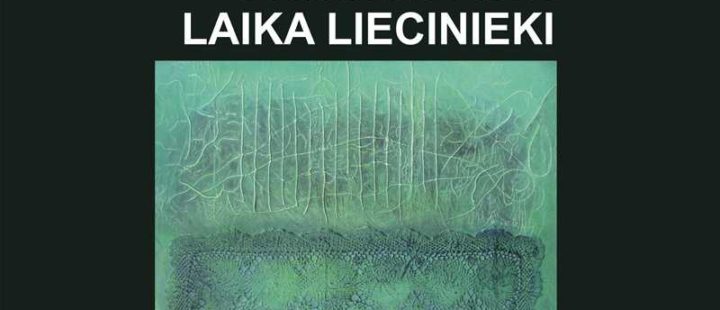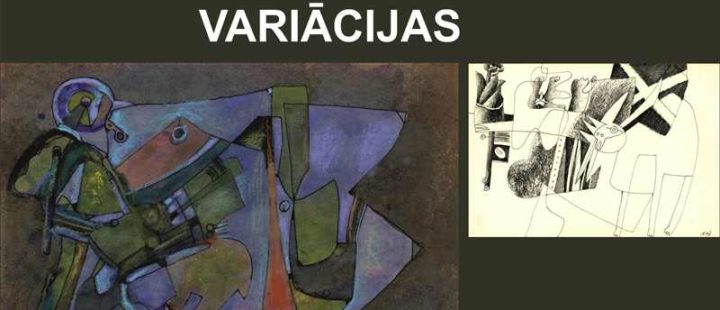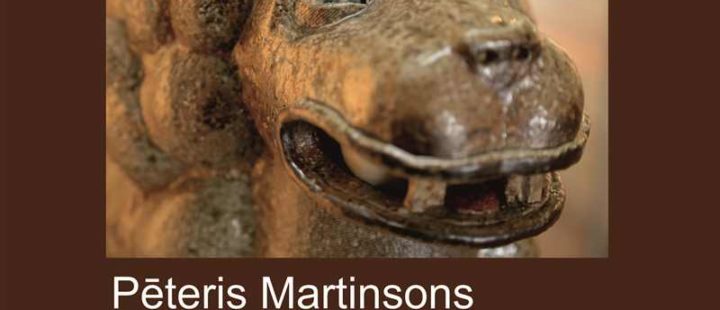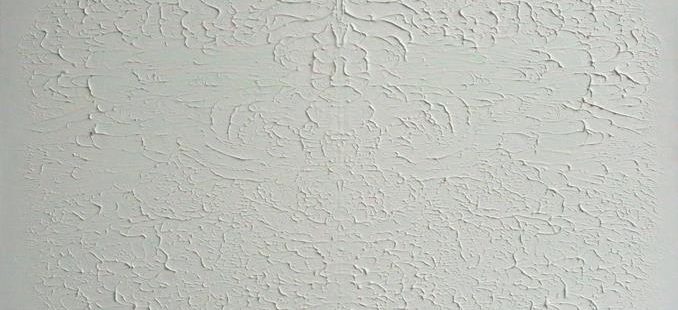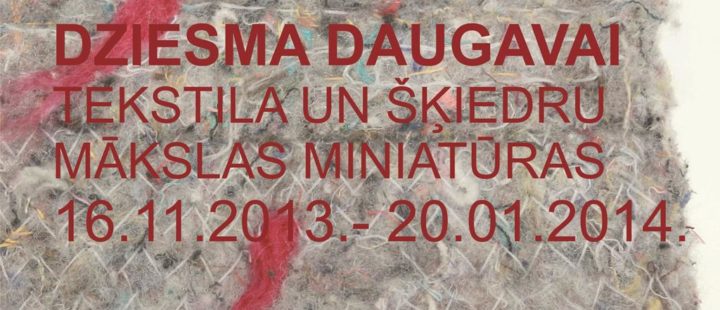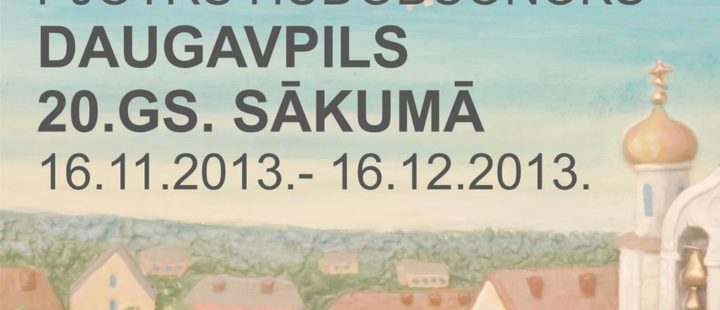Archive
Russian Painting from the Collection of Latvian National Museum of Art End of the 19th – 1st half of the 20th century
- - 12.02.2014
Latvian National Museum of Art (LNMA) owns the biggest collection of Russian art in the Baltic region. During the last five years, the museum collection’s artworks of Russian painters were successfully exhibited both in Latvia and abroad- in Italy, Lithuania and Estonia.
The exhibition “Russian Painting. End of the 19th – 1st half of the 20th century” is the first project of collaboration between Daugavpils Mark Rothko Art Centre and Latvian National Museum of Art.
Artworks of 29 artists are displayed in this exhibition. Many of these authors belonged to the generation of the Silver Age. In the collection of LNMA this period is widely represented with the masterpieces of such painters as Isaak Levitan, Vasiliy Surikov, Nicholas Roerich, Kuzma Petrov-Vodkin, Philipp Malyavin, Ilya Mashkov, etc. The majority of these authors’ works was seen in the exhibition “The Silver Age. Russian Art from the Collections of the Baltic Countries. 1890-1930” which took place in the Art Museum „Riga Bourse” from 2nd November 2012 till 20th January 2013. THE EXHIBITION OF ART SCHOOL GRADUATES WORKS OF LATGALE REGION
- - 12.02.2014
The exhibition of art schools graduates’ works of the Latgale region as a point of reference shows the performance and contribution of Latgale Art schools to this county and region, as well as the possibility for others to evaluate and look at the authors’ first major independent works in the beginning of their artistic career.
In Latvian culture Latgale region has always been rich with traditions- in each farmstead there were always heard music sounds, widely- known traditions of producing household objects, making decorations and individual farmstead signs (design of “location signs”), the culture of sacral painting. All of these have made the history of Latgale, which is supplemented with the history of the development of crafts and design. Continuing the cultural and historical traditions, Latgale brings in a unique point of view on contemporary events, and on the reflection of nature and religion in culture. Ilgvars Zalāns “Bridges”
- - 12.02.2014
Bridges, which link and separate, which open new worlds and new opportunities allow to get enough courage and fearlessly go and explore the unknown. This is the description that can be given to the recent-year style of artist Ilgvars Zalāns - the ability to build a bridge between the western and eastern lifestyles, to bring to life what he has seen on that other bank – the bright light, the joy of colors, unusual features, and roughness of textures; the ability to express experienced moments and feelings encompassed in canvases, and to share them with a viewer in paintings. City Space Art
- - 12.02.2014
In May 2012 the administrative district of Görlitz, in collaboration with Europahaus Görlitz e. V., hosted an international Pleinair with the aim of introducing the Lower Silesian Upper Lusatia region to artists from different European countries: Germany, Latvia, Poland, Portugal, Switzerland and the Czech Republic.
If we here allow the works of the plein-air exhibition “STADT I RAUM I KUNST” to fill our senses, we will intuitively move away from the concept of outdoor painting and begin to realise that this working group meeting of artists involved mainly the question of conveying the spatial experience of architectural, historical, social and mental landscapes. Alexander Rolof “TIME WITNESSES”
- - 12.02.2014
Alexander Rolof was born in Liepāja in 1969. Already in his childhood he had shown a great interest about painting. From 1985 till 1989 he studied at Liepāja Polytechnic School. In 1992 he moves to Germany. The artist characterizes the further years of his life as “a time period of an intensive self-exploration in the field of fine arts”. From 2008 till 2012 he studied at the Graphic Art and Painting division of the Bochum University of Applied Sciences (Germany). In 2012 - 2013 he attended prof. P. Sonnenwend’s master class. A. Rolof constantly participates in exhibitions and has also organized several solo exhibitions. Leonid Baulin “Variations”
- - 13.01.2014
21.01.- 28.09.2014.
L.Baulins was born on 25 May 1945 in Cherepovets of Vologda region (Russia). The family moved to Daugavpils in 1951. In 1959 - 1962 L.Baulins studied at the Gorky Art College in Russia, interested in avant-garde art and the Russian symbolist works. He entered the Art Academy of Latvia, Section of Pedagogy in 1968. After graduating from the Art Academy in 1973, the artist returned to Daugavpils. In1974 - 1996 he worked in the field of monumental painting, as well as in decoration of building interiors. In 1979 – 1990 the artist worked as stage designer at Daugavpils Theatre, since 1979 he worked as artist at Daugavpils Pedagogical Institute. Pēteris Martinsons “Ceramics. 1963 -2013”
- - 13.01.2014
21.01.- 28.09.2014.
Pēteris Martinsons (1931 – 2013) is the best-known Latvian ceramist in the world. For more than a half of a century, his art and personality have impressed and inspired ceramists of different generations both in Latvia and abroad; his achievements in international competitions have regularly attested to the excellence of his art; the radiance coming from his personality has given a creative charge to his colleagues during workshops and symposiums, to his students, to the participants in his master workshops and to those simply encountered on his way. The personality of Pēteris Martinsons is amazingly versatile – he is an architect by education, has been professionally engaged in mountaineering, a teacher of Riga Applied Art Secondary School and Art Academy of Latvia, has been a stage designer for several theatre performances in Valmiera theatre, and has been filmed in several roles. He has traveled a lot, mainly to work there, but has always come back. Back to his own country, which he always called – the most beautiful. DMRMC Collection “White”
- - 19.12.2013
„WHITE”
20.12.2013. - 20.01.2014.
balts wit white أبيض ճերմակ ağ белы zuri সাদা bijel бял bílý hvid לבן ווייַס blanka puti blanc branco λευκό თეთრი સફેદ fararen सफ़ेद dawb wit balts bijel valge ọcha putih bán hvítt bianco 白 putih funfun ಬಿಳಿ blanc 화이트 blan белый ສີຂາວ album balts baltas бело putih abjad white पांढरा цагаан सेतो hvit ਚਿੱਟਾ, سفید biały branco alb puti nga бео biely bela white valkoinen blanco nyeupe ขาว வெண்மையான తెలుపు beyaz білий fehér سفید weiß gwyn trắng white vit valge ọcha putih bán hvítt bianco 白 balts wit e bardhë white أبيض ճերմակ ağ белы zuri putih abjad white पांढरा цагаан Exhibition “Song of the Daugava River”
- - 14.11.2013
16.11.2013.- 20.01.2014. DMRMC
"Song of the Daugava River” is an exhibition dedicated to 95th anniversary of the Republic of Latvia. While creating the exhibition, artists were invited to participate with the textile and fiber art miniatures that are both dedicated to Latvian Destiny River Daugava, as well as inspired by it.
Creating the works, artists used a wide range of textile and fiber materials, beginning with traditional materials such as linen, wool, cotton and ending with a variety of synthetic and natural materials. The processing techniques of the materials have been applied in a various ways; there are woven and batik works, glued collages, basketry and other individual author's techniques.
Miniature as a genre is quite challenging. It requires the skills to make a balanced combination of author’s artistic concept and the work dictated by technical skills. Moreover, in this case, the task is complicated by the power of the Daugava, which is both strong natural embodiment and the symbolic image of the Latvian nation deeply rooted in the collective consciousness. Pjotrs Hudobčonoks “Daugavpils at the Beginning of the 20th Century”
- - 12.11.2013
Pjotrs Hudobčonoks
“Daugavpils at the Beginning of the 20th Century”
Daugavpils Mark Rothko Art Centre, Intro Hall
November 16 – December 16, 2013
Works by Pjotrs Hudobčonoks have been displayed at exhibitions in many countries: Russia, Poland, Ukraine, Finland, Germany, France, Portugal, The USA and others, having had there great success.
P. Hudobčonoks’ creative work is a remarkable example of the synthesis of old traditions, new content and new technique. One of the sources he draws on in his creative work is the traditional Russian “lubok” (a simplified kind of traditional Russian folk art) with its own marked plot, humor, specific imagery and syncretic character, where picture is combined with text. A further development of traditions and author’s ways of expression is manifested in his sculptural-plot-based compositions. These compositions are sculpture and painting simultaneously, they are a solution to a complicated task of depicting a full volume in a narrow environment. The volume is created by employing both plastic and pictorial means. The artist uses the complicated kaolin-based composite material. 
